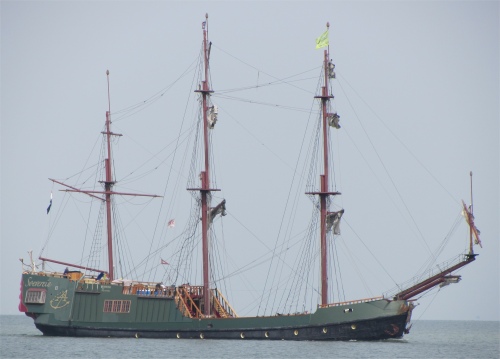 Tall Ship "Soeverein" Gliding by in the Calm Markermeer |
Sipping coffee in the cockpit, Rex and I discussed for the umpteenth time the relative merits of making Monnickendam or Volendam our next port of call, whilst simultaneously checking formulae for conversions between wind speed and the Beaufort Scale, as you do while sitting on a boat on an early morning in Lelystad.
A chap came down to the rear of our boat, and asked me in good English (what else do you expect from the Dutch), "Bradwell is your town where your boat is kept?" (Bradwell is the port named on the back of Duonita) "No, it is kept at Tollesbury, on the Blackwater Estuary, not far from Bradwell," I explained. "Do you know of that area?" I added. "I know some of the area," he replied, "Ipswich and Pin Mill". The chap had sailed to England a few times: East Anglia, London, Newcastle and Eyemouth. I shared with the fellow our trips around Holland and the Baltic. He had sailed to Denmark and Norway, but never into the Baltic. "For the Dutch it is hard to get back from the Baltic because of the prevailing winds," he stated. He kept his boat in the marina, a Midget he said. It turned out he was today's harbour master, and the man wished us good luck with our journey as he returned to his business.
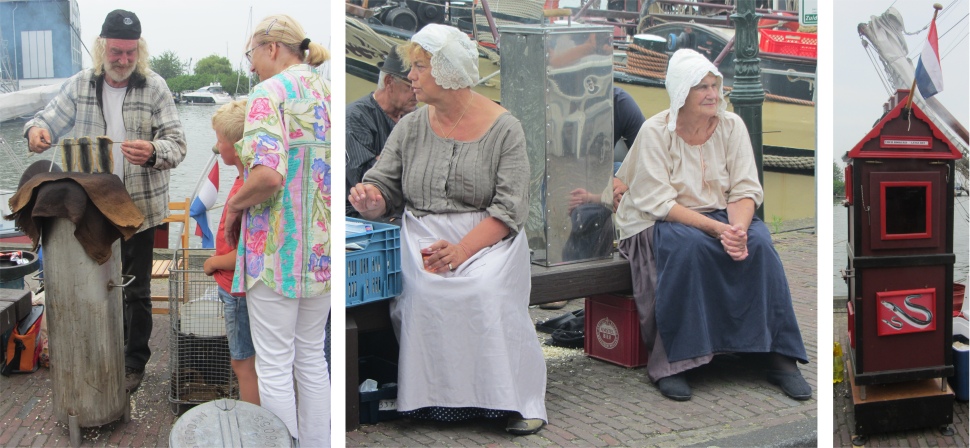 The Eel Smoker Gang with Their Elaborate Smoking Contraptions |
 The Speeltoren |
Once shipshape, we slipped our mooring lines and made our way to the nearby lock that would give us access to the Markermeer. A few yachts were already about waiting for the giant lock gates to open, two gates at the entrance and two at the exit. The turnaround time was fairly short, and the drop in level a matter of centimetres.
Following the yacht channel leading south from the lock, we entered the large expanse of the Markermeer. The water was very calm with hardly a waft of air. The rising sun was slowly melting the clouds away, and we could feel its welcome warmth building up on our bodies. Long lines of cormorants skimmed the grey water. A few boats had their sails out, but they hung limply, a slightly surreal sight reminding me of the clock faces in Salvador Dali's famous painting, "The Persistence of Memory". Convoys of barges headed to and from the locks at Lelystad, painting feather trails across the water on their endless passages to Amsterdam. I watched a tall ship approach from the horizon, and gracefully glide past us 200m away. After some good sailing recently, it was sad to just be motoring, but despite that it was a blissful, chilled out trip.
Within a few hours we were rounding a long pier that stretched out from Marken in a northerly direction, rendering the Gouwzee effectively an open-ended dam. The village of Marken was separated from the mainland after a storm surge in the 13th century. A centuries-long period of isolation followed for the community which made their money from fishing. The typical houses and the traditional costumes are reminiscent of the past. In the old days, the island was flooded quite regularly. For this reason, houses were built on stilts and on mounds, today a tourist attraction. The dyke to the south, which was constructed in 1957, once more links the island to the mainland.
We entered the Gouwzee with Volendam on our right, carefully avoiding the large, squat pleasure cruiser that was leaving the town. The channel down the back of Marken was narrow, and we hugged the buoys as we turned into Monnickendam.
The marina we chose was huge, one of several that served the town. I hopped off Duonita, located the harbour master, a well-tanned fellow with a jovial disposition, and a blue outfit. I had flexibility in negotiating our position in the marina, and the kind chap was soon providing me with maps of the town, helpful tips about the eel smokers who were in town today, and importantly, advice on the imminent weather front running through. We set up the ropes on the boat to handle predicted gusts of up to 48km/hour. We also learned from the harbour master that such storms from the expected compass point can cause vast quantities of water to be swept up out of the Gouwzee and into the Markermeer, reducing the depth in the marina by up to 30cm.
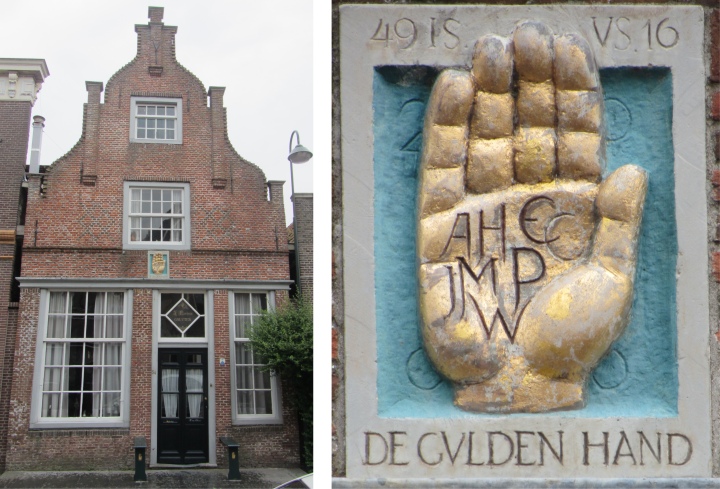 Golden Hand |
 Het Lanswelvaare |
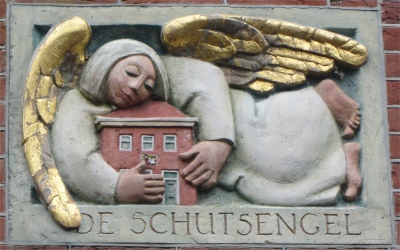 Guardian Angel |
Monnickendam originated with the damming of the bog stream, the Leek. Shortly after 1240 when this dam was created along with an adjoining seawall, the reclamation of the area, Monks Broek, was made. Monnickendam (Monks Dam) is first mentioned historically in the year 1316. It should then have been an insignificant settlement, but after Count Willem V arranged a toll in Monnickendam for passing goods in 1340, Monnickendam was raised to town status in 1356. Devastating fires took place in the city in 1499 and 1513. Monnickendam underwent a short-lived boom towards the end of the 16th century, and reached the peak of its economic power and political influence around 1630. However, it was slowly overtaken by Amsterdam.
In 1661 a barge canal was dug to Amsterdam. Because of the declining economy Monnickendam had only a limited regional interest during the 18th century. Thanks to the steam train connecting Amsterdam to Edam (1888-1955), and the increasing tourism, was the decline halted. The importance of the yacht building increased, but the modest fleet disappeared after 1932. After World War II transport was improved, leading to Monnickendam developing into a commuter town. Over the centuries, the city has largely remained preserved intact, and is now a conservation area.
 Het Waterlandshuis |
Monnickendam claims to possess the oldest carillon in the world. Every hour small riders on the tower perform their medieval jousting on long strikes of the hour bell. Fame, the winged Roman goddess of rumour and the herald of good and bad news, raises her trumpet, each time the clock strikes. Since 1981, the "Waterland Museum Speeltoren", dedicated to the history of Monnickendam and Waterland, has been located in the Speeltoren.
 Grote Kerk |
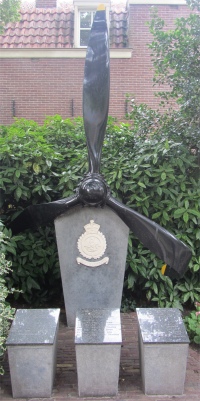 War Memorial |
Next door stood No. 52, with its plaque "Het Lanswelvaare" dating from 1763, telling another story. Pieter Winkes was a pirate sea captain in the West Indies. Because his wife fell ill, he decided to give up sailing and took a job as inspector at the rope-making yards of Monnickendam, the one named "Het Lanswelvaare". Thus, he could take care of his wife.
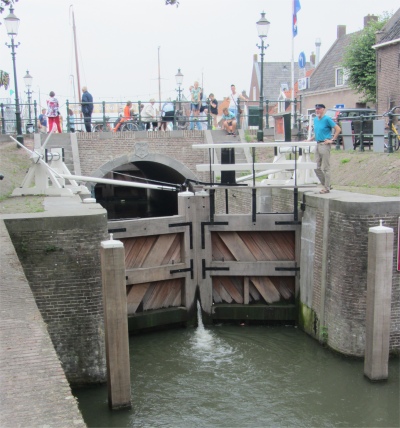 Damsluis, the Harbour Master Operating the Lock |
Getting back on track on the Kerkstraat, we passed by Het Waterlandshuis (The Waterland House), consisting of a construction dating from 1619, and a neighbouring 17th-century building with gable. From 1831 to 1987 this double property was owned by the Waterland Water Board. In a major restoration in 1908, the facades were rebuilt preserving the natural stone façade components. The plaque with the town crest probably came from the Northern City Gate demolished in 1888. The plaque on the right pictures a swan, a symbol of Waterland.
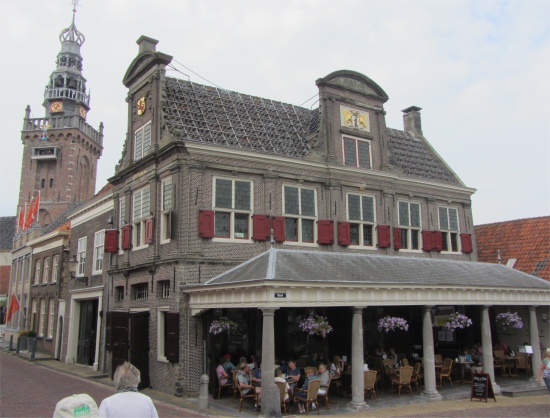 Waag |
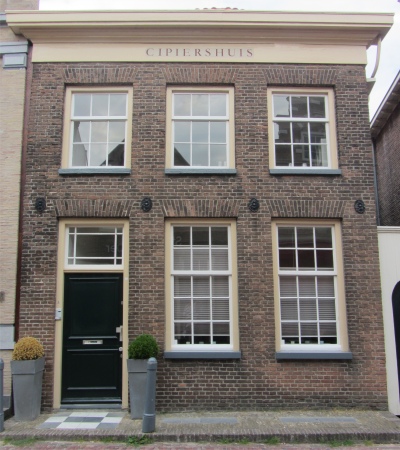 Cipiershuis |
 Maria Bootschap |
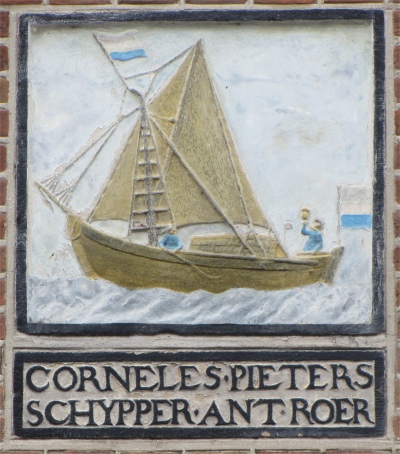 Corneles Pieters Schypper ant Roer |
We made our way back to our starting point, and as we approached the Damsluis along Het Zand, we noticed one house had a large number of clocks on display in its windows, fairly ornate and elaborate clocks from all over the world. There was no indication as to whether the house was just a house, or a museum, but we gazed for quite a while at the magnificent display inside. We reluctantly left the windows, and went to watch the town harbour master operate the lock by the Damsluis. Amazingly, he looked up, gave a smile, and shouted across to Rex. The chap had spotted us looking through the windows of the building, and we discovered it was actually his house. "I would love to show you around my clocks, but sadly, as you can see I am tied up at the moment," he said with a sigh. A kind gesture I thought.
 YNDE MELCKMAN |
We were now back by the Waag. Like towns we had visited before, when Monnickendam was granted a city charter, it gained the right to levy excise duty on locally traded goods. This of course necessitated a reliable weighing system, the Waag.
The Waag had been in existence since 1382, and actually comprised two buildings, one containing the balance and the scales, and the other an open building that could be traded. The Waag was rebuilt in 1669 after the previous building was destroyed in 1666 by fire. The facades, especially the upper portions, were richly decorated with stone, both vertically (pillars) and horizontally (frieze, cornice). The Doric pilasters with articulated floor served as a meeting place for the militia. In the years 1909 and 1985 the building was thoroughly restored. The cross with stained glass windows and shutters are partly original.
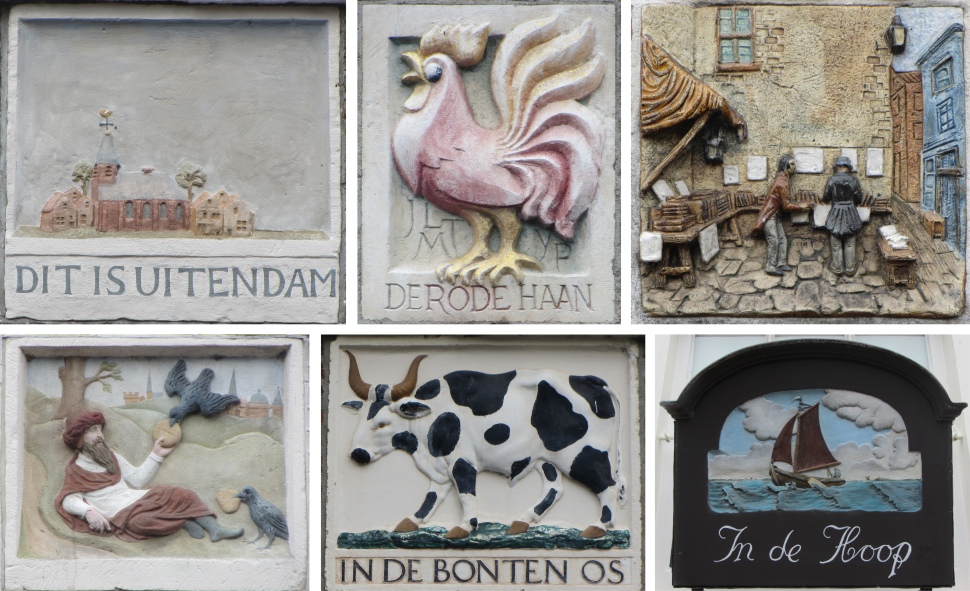 Yet More Wall Plaques |
A couple of doors away from the Waag stood the Cipiershuis (Warders House). As the name suggests, this was once a prison. There were two cells, but almost no prison sentences were handed out; monitoring and feeding of the prisoners cost society dearly.
Having done the lower loop of a figure of eight, we now headed all the way up Havenstraat and Haringburgwal, turning back down Noordeinde, the main gable plaque street, to tackle the upper loop.
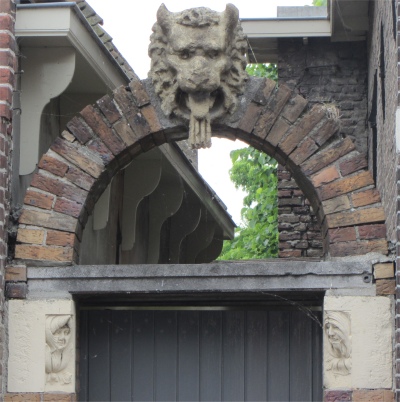 Monster Gate |
The plaque "Corneles Pieters Schypper ant Roer" (shipman Corneles Pieters at the helm) actually consists of two separate plaques, one with text and the other the image. Both the building and the plaques are from the 18th century.
The sandstone plaque "YNDE MELCKMAN" dates from approximately 1649. On the red cow and the black letters, red colour traces were found. In 1862, Joost de Moes purchased the bakery located in this building "De Roode Melckkoe". Therefore, it is assumed that the cow was once red. It is thought that the word YNDE is a sculptor's error, they were often illiterate and did not know the meaning of the text given them.
Above the gate of one house was a monster, made in 1870 of tuff (lava ash pressed into a solid stone). The head came from the demolished Central Theatre in Amsterdam Amstelstraat in 1965. It was heavily eroded, and had to be impregnated with two litres of liquid stabilizer. On the piers to the sides of the gate, sandstone heads of a man and a woman were inset. They had been sculpted by Eduard Cuypers around 1900. They came from the Jugendstil bank building on the Herengracht in Amsterdam, which was demolished in 1966.
By now we were getting plaqued out, but the tour had given us an excellent insight into Monnickendam and its history.
We enjoyed a beer and food in the Waag in the evening, and chatted to the young lad who served us. He spoke excellent English, unsurprisingly since he was studying English. He planned to work abroad in Manitoba, Canada. Good for him I thought.
